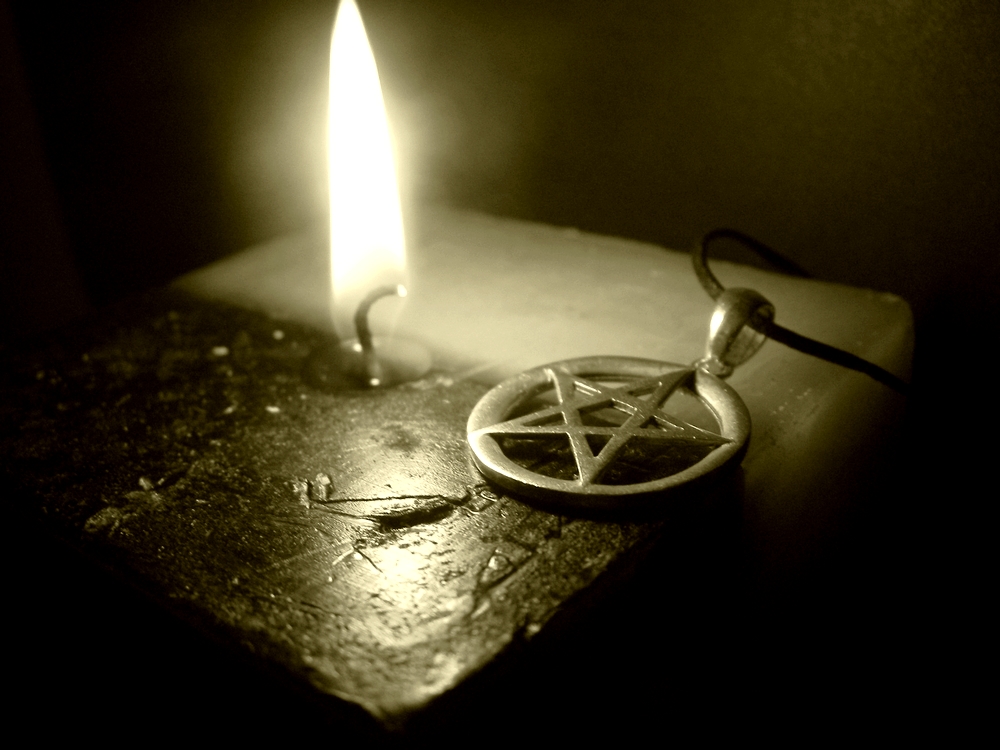Cleansing, Meditation
Meditation Area Cleansing
There’s a couple of things you can do to your meditation or magic area in order to help clear additional negativity.
As we’ve discussed before, Sandalwood Incense is a great herb to burn to clear the air. This coupled with a white candle are the tools you can use.
Another great tool is a broom. Brooms are used by witches in order to prepare their magic circles. I have two brooms in my house: one for cleaning and one for cleansing. The cleaning broom doesn’t get used as much as the cleansing one. What can I say, I hate sweeping dirt, LOL.
To prepare a cleansing broom, you will need to find a good quality straw broom, preferably with a oak handle. If you cannot find oak, wood would be fine. You can take the broom and use a light mixture of warm water and salt and gently sprinkle it on the straw and handle. Rubbing it down with a good sandalwood essential oil is also a great suggestion. Store the broom so that it will not be mistaken by house guest as a cleaning broom. I added a small piece of white ribbon to the top of the broom to indicate that it is different as well.
Before setting up your meditation area, grab your cleansing broom. Gently sweep the area and imagine the negativity getting swept away. The bristles do not even have to touch the floor (this is preferred so that the broom doesn’t become damaged).
IN a pinch, you can use any old broom, although having one specifically for this purpose is much more effective and helps you as another element of setting the mood.
Another good alternative is to use a cinnamon broom. They are usually available in the Fall, they smell really good and are 100% natural. Cinnamon is a natural herb that increases psychic vibrations and raises energy levels. The only thing I don’t like about the cinnamon broom is that they can become brittle and start falling apart. They don’t last nearly as long as a good wooden stock broom.
Meditation and Breathing
Proper breathing techniques are important in spiritual and psychic development because it allows you to take control of the moment, especially during meditation.
When infants are born, they breathe correctly. Their diaphragm moves and you can see their stomachs rise and fall with each breath. As we grow older, we tend to breathe using our chest instead of our diaphragms.
Here’s some practical exercises that will help you maximize your meditation breathing potential and give you more energy in everyday life.
- Use your diaphragm
Make a conscience effort to start breathing the right way. Once you start doing this, your body will remember and it will come naturally over time. The great thing is that you can do this anywhere and at anytime. First you will want to sit up (or lie down) straight and take in a deep breath while slightly sticking your stomach out. To exhale, simply pull your stomach back in. Allow your chest to “rest” as much as possible. - Like Daniel San
The next exercise is to start taking your breaths in through your nose with your mouth slightly closed and exhale through your mouth. Just think about it for a moment. Your nose acts as a natural filter against pollution by capturing dust in the air. This will ensure that a cleaner and better quality of air is entering your lungs. Your mouth doesn’t have the same filter system, so imagine all the extra debris you are sucking into your body. - Breath, Hold, Exhale, Hold
Once you feel comfortable breathing with your diaphragm through your nose and out your mouth, you are then ready for meditative breathing. When meditating, you can use this technique to focus on bring in good energy and exhaling bad energy. I generally do this just before charging my chakras to make it easier.Don’t breath quick, but focus on slow. At first, you may want to count in your head to five as you breath in and then hold your breathe. When breathing in, visualize positive energy entering your nose and going into your lungs. When you hold, imagine the positive energy in your body “pushing” the negative energy up, poised to push the bad out. Hold your breath for as long as you took to breathe in (in this example, 5 seconds). Then after holding, exhale slowly through your mouth while visualizing the negative energy being pushed out of your lungs and past your protective barrier (remember Shields Up). You will want to exhale for the full time you took to breath it in. Before you take your next breath, hold again.You want to time the “Breath, Hold, Exhale, Hold” cycle so that it is comfortable. If five seconds is too much, try three. But as it becomes more comfortable and natural, you can extend this time. I use around 10 seconds when I begin meditation and as I enter that center of peace, I turn this down to around 6 seconds for each part of the cycle.
Don’t let the cycle timing prevent you from the point of your meditation. Once you feel relaxed, charged up and ready to go, just imagine yourself continuing the breathing technique involuntarily and then move into the next phase of your meditation.





